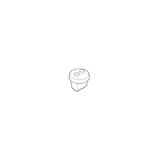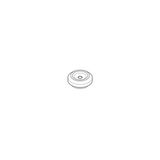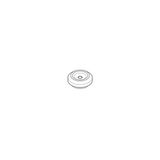Siteco Cable inlet





siteco cable inlet Application scope and engineering context
Panels, luminaires, rooftops, and machine cells only stay tight and compliant when the entry hardware matches the wall, cable, and environment. This range covers metric and NPT threads, straight and 90° bodies, plastic, nickel-plated brass, and stainless, with gaskets that actually hold IP after heat cycles. Clamping windows are printed on the cap; installers can set torque without guesswork. For brownfield trays and curbside pedestals, UV-stable bodies and wide −40…+100 °C service windows keep routes trouble-free through seasons.
siteco cable glands Range, materials, and EMC options
Clamping spans typically run 3…6.5 mm (M12) up to 34…44 mm (M63). Plastic (PA6/PA12, HF/LSF) suits SELV and indoor loops; nickel-plated brass delivers pull strength and temperature margin in plant rooms; AISI 304/316 covers food and coastal work. EMC versions use 360° braid-contact springs that bite the shield before the seal, keeping transfer impedance low so VFD feeders meet emission limits. Long-thread variants stop “star-cracking” on sandwich doors; locknuts with serrations or toothed washers guarantee bonding through paint.
siteco cable entry systems Modular frames for pre-terminated leads
Split frames with slitted grommets let you pass connectors without re-termination. Rectangular cut-outs simplify punching; compression from the front locks grommets and restores the IP rating. With five grommet sizes and a handful of blanks, crews standardise shelves and finish dense cabinets quickly. Through-bolted plates resist pull-out on robot cells where cables move every shift.
Technical specifications and standards you can build to
- Ingress protection to EN 60529: IP54/IP66/IP68 by series and assembly.
- Fixing and pull-out to EN 62444 (ex-EN 50262); stated working loads and test curves.
- Impact up to IK08/IK10 (EN 62262) on metal bodies and sealed plates.
- Threads ISO metric (M12…M63) and NPT ⅜″…1½″; reducers/adapters available.
- Chemical resistance tables for oils, glycols, alkalis; silicone seal sets for >100 °C zones.
- EMC parts publish contact resistance and recommended braid strip length.
Torque windows (e.g., 2.0–2.5 N·m on PA caps, 3.5–5.0 N·m on brass) are documented so drawings translate straight to the shop floor.
Applications, routing, and EMC practice
Drives/MCCs: terminate shields 360° at the plate and bond to the main PE bar—no daisy-chain earths. Outdoor risers: use long-thread bodies and sealing washers; add drain/vent plugs in humid kiosks. Lighting canopies: low-mass M16/M20 plastics protect thin reflectors; respect Ta and T-class around hot gear. Where inspectors demand visible segregation, stagger power and control entries and cross at 90° inside the trunking. If your spec mentions siteco sealing cable entries, list IP class, thread, clamping range, and gasket compound at each tag—audits go faster when that quartet is explicit.
Integration with luminaires, panels, and networks
The same plate geometry serves Siteco surface/industrial luminaires, small DBs, and control cabinets. Pair metallic EMC parts for power with plastic pass-throughs on SELV and fiber. Keep PE jumpers short; on painted steel use toothed locknuts to cut through coating. For camera and sensor whips, compact bodies positioned as siteco wiring inlets keep drops tidy and serviceable.
siteco cable protection fittings Environmental and mechanical choices
Edge-clamp cable supports take load off the gland in high-vibration skids. Strain-relief glands with integrated clamps are worth the few extra euros when hoses tug the harness. In washdown or CIP zones, smooth-body stainless fittings with silicone O-rings pass hygiene checks and survive caustics. For roof arrays, UV-stabilised plastics prevent chalking; specify black bodies for better UV performance.
Selection criteria for B2B buyers
- Environment first: indoor dry, humid, washdown, or coastal—this decides material, IP, and seal compound.
- Cable geometry: round vs flat; choose grommets that grip without ovalising the sheath.
- EMC policy: 360° termination on noisy feeders and encoders; isolate shields on SELV.
- Mechanics: thread family/length, panel thickness, bend radius behind the plate.
- Documentation: print torque, strip length, and clamping window on the drawing; installers stop guessing.
- Logistics: standardise five sizes across the project; spares and reducers become interchangeable.
Where the schedule uses siteco electrical cable access as the umbrella term, align IP and metalwork across all entries in a bay—water and noise take the weakest path.
Procurement and field notes
Order reducers, blanking plugs, and spare O-rings with the first drop—missing reducers are the #1 cause of late drilling. Keep one wrench size per board where possible; mixed hexes slow lifts. On vibration-prone frames, add cup springs to maintain compression after heat cycles. Mark entry IDs on the plate; QR labels tied to the route schedule save minutes at FAT.
Advantages of working with Bankoflamps
We map thread families, clamping ranges, EMC needs, gasket compounds, and frame cut-outs to your enclosure schedule, then show live EU stock by warehouse before shutdown windows are booked. Quotes typically land in about an hour with EAN/MPN, IP/IK class, torque tables, chemical tables, and plate codes—so nothing drifts mid-phase. Your portal shows lead times, consolidated shipment status, and downloadable price lists with validity dates; approved clients can use post-payment up to 30 days. We consolidate by panel face, route segment, or luminaire family to cut freight and site sorting, and your account manager checks cable OD spread, bend radii, bonding method, altitude/ambient derating, and segregation against your drawings—so crates arrive build-ready and electricians terminate once.